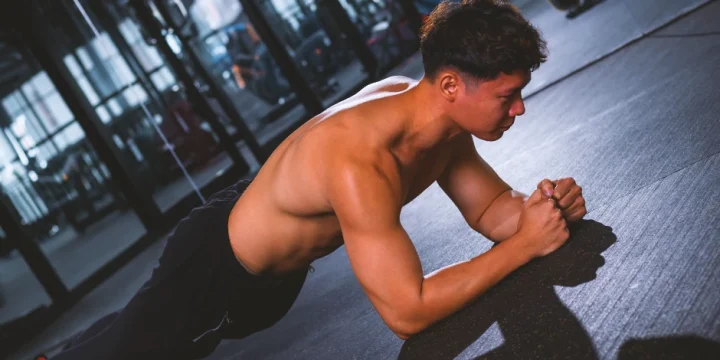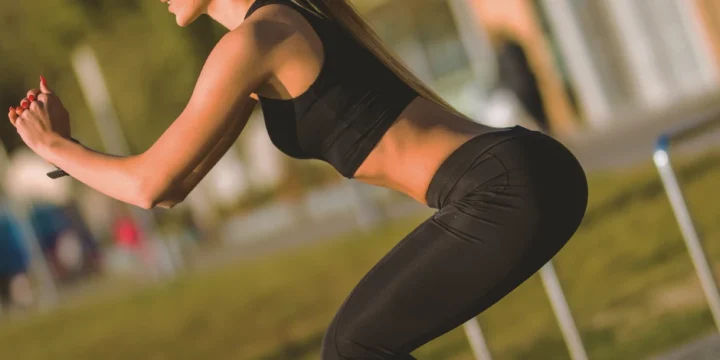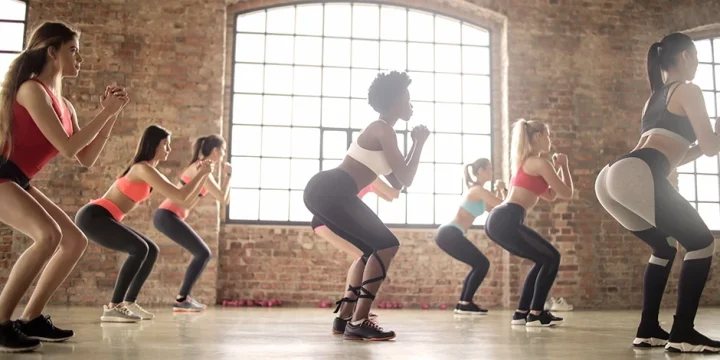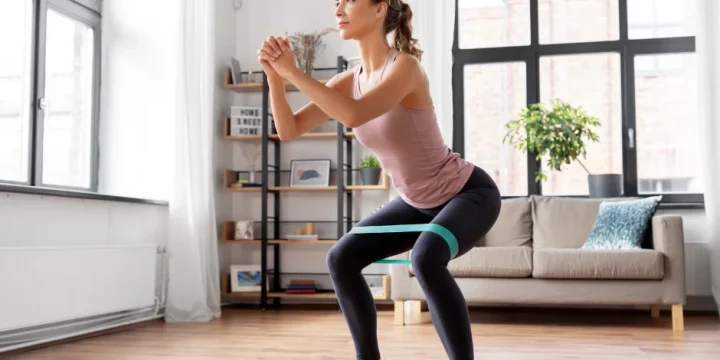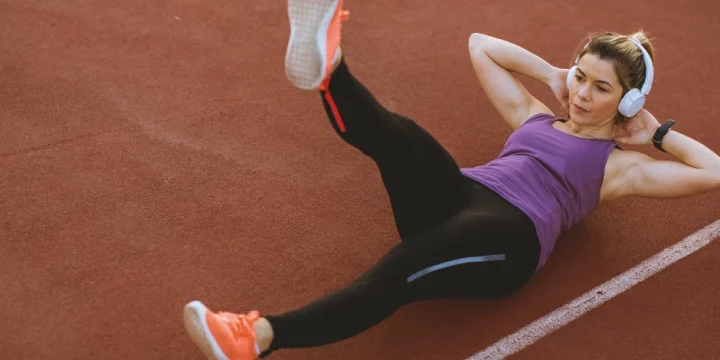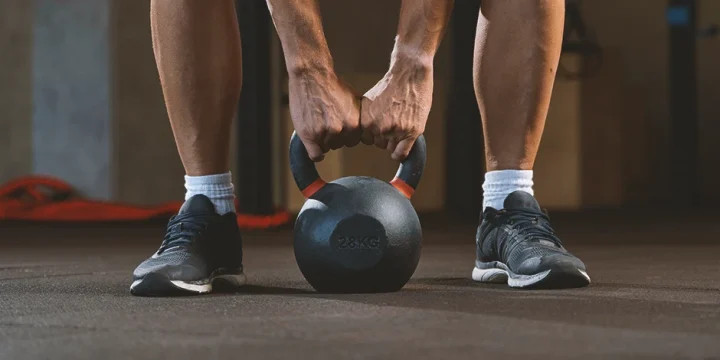The bodyweight squat is a basic exercise that builds strength in your legs and glutes.
While it may look easy, this move is not to be underestimated.
Beginner or not, squats are guaranteed to have your lower body muscles burning and your heart pumping ten reps in.
People squat a lot in everyday life, which is why mastering this movement is essential.
Quick Summary
- To do bodyweight squats effectively, start by standing with feet shoulder-width apart, then lower your body as if sitting back into a chair, keeping your back straight and knees over toes, then rise back up.
- The common mistakes people make in bodyweight squats are lifting your heels, failing to engage your core, and letting your knees cave inward.
- According to research published by MOJ Yoga & Physical Therapy, squats primarily work your quadriceps, calves, and hamstrings, strengthening your legs and the tendons in your knees.
- Based on my years of training clients, I've found that bodyweight squats are unparalleled in improving functional strength and mobility.
How To Do Bodyweight Squats Correctly
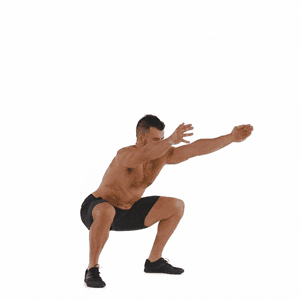
Like I always tell my clients, the key to reaping bodyweight squat benefits is getting your execution down to a T.
Here’s how to do bodyweight squats correctly:
- Stand tall with your feet shoulder-width apart, toes slightly turned out, and arms at your sides.
- Keep your torso upright. Brace your abdominal muscles and look ahead.
- Shift your hips back and down, then bend your knees to get into a squat position until your upper legs or thighs are parallel or almost parallel to the floor. Inhale on the way down.
- At the bottom of the movement, push through your heels to return to the starting position. Exhale as you go up.
- Aim to do three sets of 8 to 15 reps.
For beginners, suspension squats using tools like TRX enhance strength and range of motion by offering better weight control.
Alternatively, squatting with a stability ball against the wall provides added support. If you tend to lose balance, starting with box or chair squats is beneficial, boosting confidence and safely practicing the movement.
Also read: How to Do Otis Up?
Important Tips For Performing Bodyweight Squats
- Hold your arms out in front of you at shoulder height to counter-balance your weight.
- Make sure to push your hips back and drive down through your heels when you stand back up. This helps activate your calves, hamstrings, and glutes even more.
- Keep your back as straight as possible throughout the exercise to avoid strain or injury.
- You can increase the intensity by jumping up explosively from each squat.
Common Bodyweight Squat Mistakes

As easy as bodyweight squats look, a few common errors can make them less effective. Here are the most common errors I often see as a fitness trainer:
Lifting Your Heels - If you don’t keep your feet flat on the ground throughout the exercise, you will lose balance and body alignment.
Failing To Engage Your Core - Forgetting to turn on your abs during bodyweight squats will put unnecessary pressure on your lower back and may lead to injury, so make sure to brace your core before you squat.
Letting Your Knees Cave Inward - You put extra pressure on your knees when they fall out of line with your hips and ankles, increasing your risk of injury.
It also takes some of the work out of your butt muscles, leading to wasted efforts.
Benefits Of Bodyweight Squats
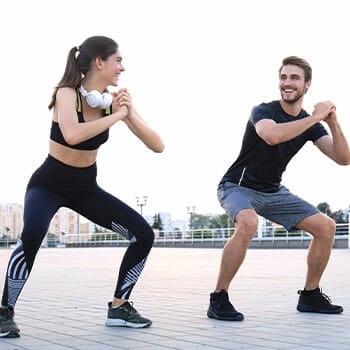
Humans squat from the day they learn to walk, so learning to squat correctly can make various movements like getting up from the couch and picking something up off the floor easier.
Like I always tell my clients, your fitness level does not matter; just doing these bodyweight squats can do you plenty of good.
Also, If you want to boost your performance, I suggest taking a pre-workout supplement.
Based on my experience over the years as a fitness trainer working with multiple clients, here are some of the benefits of bodyweight squats that I've seen my clients enjoy:
Work Multiple Muscle Groups At Once: As a fitness trainer, I've witnessed the effectiveness of bodyweight squats in building muscle and strength throughout my clients' bodies.
Research from MOJ Yoga & Physical Therapy shows that squats target quadriceps, calves, and hamstrings, reinforcing leg strength and knee tendons [1].
Proper form extends their impact to the thighs, hips, butt, abs, and the entire back.
Help You Move Better: Performing bodyweight squats improves your coordination and balance. It also develops mobility in your hip joints, ankles, and knees.
Can Be Done Anywhere, Anytime: You can perform the bodyweight squat virtually anywhere, and you don’t need any type of equipment to do it.
Enhanced Athletic Performance: Squats are regarded as one of the most effective exercises for enhancing athletic performance.
Lower Back Strengthening: This exercise also contributes to strengthening the lower back, supporting overall back health.
Improved Flexibility: Bodyweight squats improve flexibility in the lower body, which is beneficial for mobility and injury prevention.
Bodyweight Squat Variations

Bodyweight squats are quite easy to outgrow, especially if you’re training for muscle mass and strength instead of endurance or weight loss.
Weighted Squats
Suppose you’re ready to progress to weighted squats. In that case, you can try incorporating a medicine ball, or a barbell, wearing a weighted vest, or holding dumbbells, kettlebells, or other resistance training tools while squatting.
Switch Up Your Stance
Try progressions such as pistol squats and split squats to increase the intensity of your squat exercise. These single-leg variations put extra emphasis on your working leg, increasing exercise difficulty and strength gains.
You can also change your regular foot position to a narrower one or go wider to perform sumo squats, which can fire up your inner thighs further.
References:
- http://thehubedu-production.s3.amazonaws.com/uploads/6194/46523394-507e-4c7c-93ac-4cb91428821c/MOJYPT_03_00042.pdf
About The Author
You May Also Like
